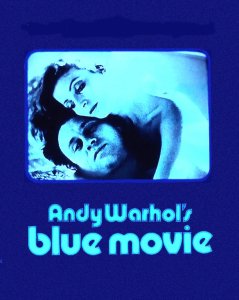The Beinecke Library has a new exhibit Blue: Color and Concept, showing a new way of organizing materials instead of by author. They culled their collections for blue ephemera to tell a different kind of story.
Given the kind of winter we’ve had, no wonder I waited until a bright, sunny day to go see it. Next winter, the Beinecke curators might consider yellow or orange instead.
So yes, the exhibit, which wants to explore the cultural history of the color blue in the 19th and 20th century, has the requisite sheet music, posters, and such of blues artists  like Miles Davis, Ethel Waters, Joni Mitchell, and the “Heroes of the Blues.”
like Miles Davis, Ethel Waters, Joni Mitchell, and the “Heroes of the Blues.”
Wait, you don’t know the 36 trading cards of the “Heroes of the Blues”? My favorites are Memphis Minnie and Barbecue Bob. Move over baseball…I’ll trade you for the Mississippi Sheiks.
And there’s the blue mood. Sheet music of ‘Mood Indigo’ by Duke Ellington and the “Basement Blues,” blues poetry by Langston Hughes and the Harlem Renaissance writer Arna Bontemps, and the handwritten anonymous “I’m so blue, I’m blue black.” Don’t forget the blue period by Picasso. It’s there, too.
What makes any exhibit a kick for me is learning something new or making a fr esh connection. So move past the obvious, and we come to Andy Warhol’s “Blue Movie.”
esh connection. So move past the obvious, and we come to Andy Warhol’s “Blue Movie.”
That title got associated with porn, but Warhol insisted that the film was really a protest about the Vietnam War. Whatever.
How much more interesting to learn that the source of the lurid connection comes from a British expression. “Blue Gown” refers to clothes worn by convicted prostitutes. Don’t you love the source of sayings?

And then there’s the “Blue Book,” a New Orleans photographic directory of the city’s brothels, published from 1905-1915. Really.
Here’s a quote from the entry on Mme. Emma Johnson’s “Home of all Nations,” located in the Tenderloin District at 331 and 333 Basin. “Everything goes here. Fun is the watchword….There are never less than twenty pretty women of all nations, who are clever entertainers. Remember the name.” Some advertising!
Now, that book is not to be confused with the “Blue Book.” Apparently a common enough name. But this Blue Book is a series for children. There are 19th century primers, storybooks, and toy books. Look for a tiny version of The Little Match Girl from 1862, Puss ‘n Boots, The Sailor Boy, and an adorable version of Whittington and His Cat.
Although they are tiny, the children’s books are not to be confused with the “Little Blue Books,” a run of 2000 paperbacks in pocket size, featuring translations and reproductions of all kinds of works–the Rubiyat of Omar Khayyam, Sherlock Holmes, “Electra,” Buddhist Philosophy, card games, the Life of John Brown, electronics, Alice in Wonderland, the Lincoln-Douglas Debate, Freud, “Hamlet,” and Rip Van Winkle. Great subway reading, for just 5 cents each.
The ‘everyday’ from the exhibit was fun, too.
Airmail letters were on blue paper, remember? The exhibit documents the correspondence between H.D. a famous poet “discovered” by Pound. H.D. turned out to be Hilda Doolittle, who published by hiding her gender, and the exhibit features her airmail correspondence with the literati of Europe.

Edith Wharton’s Parisian driver’s license is on display. It’s about 8 1/2″ x 11″ and features her picture. Somehow, this just looks classier than our laminated cards.
Of course, there were lots of architectural blue prints, the blue from an iron-salt process that is no longer used, even as plans are still referred to as blue prints.
The same technique was used to create cyanotype photographs. These wistful blue-tinged images were most popular in the late 19th and early 20th century, because they were low cost to produce, and the process was simple. Much of the American West was documented using cyanotypes, to the chagrin of the photographer Peter Henry Emerson, who considered the blue tone as “vandalizing the landscape.”
The remarkable thing about cyanotypes is that they fade when exposed to light, then the blue is restored when put back into the dark. Amazing! The curators are running an experiment in the exhibit to try to better understand this “curious phenomenon.”
I really liked seeing Robert Henri’s color and composition experiments with blue, and other colors. Never published, the papers are at the Beinecke. Now if those curators could just focus on the more cheery colors!
